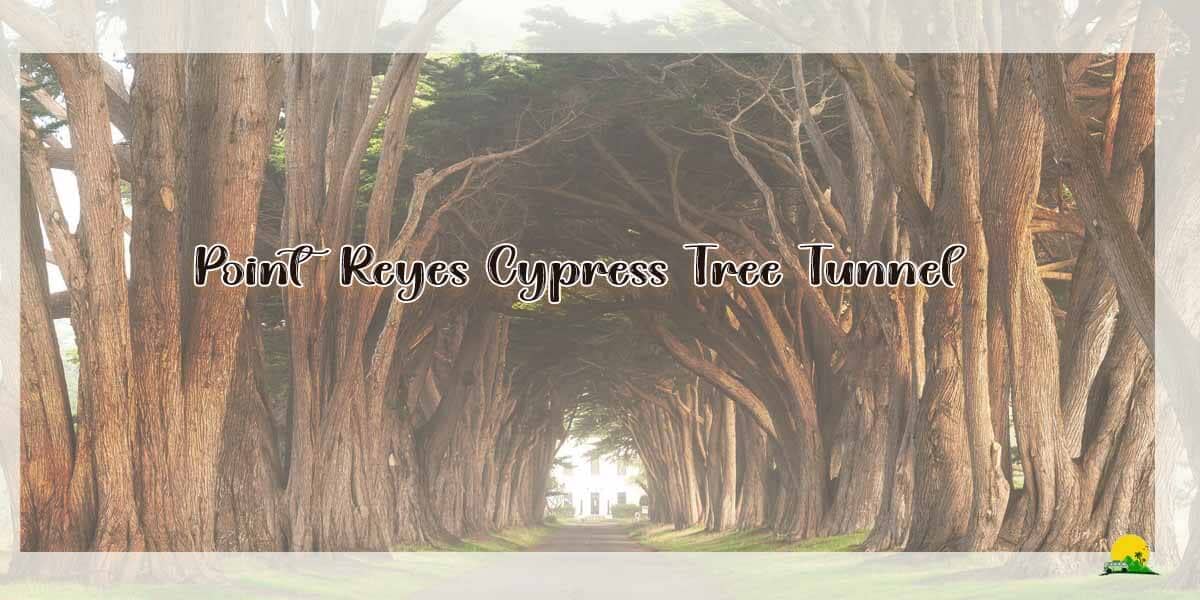The Story of Point Reyes’ Cypress Tree Tunnel

The Story of Point Reyes’ Cypress Tree Tunnel
The Cypress Tree Tunnel is an iconic landscape feature within Point Reyes National Seashore in Marin County, California. What started as a simple planting of Monterey Cypress trees in the early 20th century has become a natural tunnel that frames 90 years of history. Today, the tree tunnel is a scenic landmark, drawing visitors interested in its unique beauty and learning about its cultural significance.
This article will provide a comprehensive overview of the Cypress Tree Tunnel. It will explore its origins and evolution, historical context, current role within Point Reyes National Seashore, and visitor experience. Through engaging storytelling and rich descriptive details, the goal is to impart a deeper understanding and appreciation of what makes this natural formation a place worth discovering.
index
ToggleOrigins and Evolution
The Cypress Tree Tunnel originated from Monterey Cypress trees planted around 1930 by the Radio Corporation of America on their KPH Maritime Radio Receiving Station in Point Reyes National Seashore. RCA operated the receiving station from 1919 to 1963 as an important communications hub. Monterey Cypress was a strategic choice due to its wind resistance, dense foliage, and ability to thrive in nutrient-poor soil along the rugged coast. As the trees grew over decades, carefully maintained by RCA, who took pride in the landscaping, their branches began arching over the road. This eventually formed a complete canopy, transforming the road into a dimly lit passageway and creating the illusion of walls, a unique tunnel formed entirely by natural processes.
Historical Context
To truly appreciate the Cypress Tree Tunnel, it’s essential to understand the critical role that the KPH Maritime Radio Receiving Station played in maritime and over-the-air communications for most of the 20th century. During this era, ship-to-shore radio was the primary means for vessels traveling on the open ocean to receive information and instructions and stay in contact with those back on land.
Coastal receiving stations like KPH were critical hubs linking ships to worldwide telegraph networks via powerful radio transmitters and receivers. Messages could be sent and received across vast ocean distances, a technological marvel at the time. KPH handled commercial ship traffic, emergency rescue operations, and naval communications. Its remote coastal location at Point Reyes provided optimum conditions for uninterrupted transmissions with ships far from sea.
RCA came to own and operate KPH in 1919 as radio technology advanced and its use became widespread. Significant investments were made to install the latest equipment and expand the station’s capabilities. A formal entranceway and landscaped grounds were part of RCA’s vision to portray KPH as a sophisticated, well-run operation befitting its reputation. The Cypress Tree Tunnel soon became an iconic landmark identifying the station’s location for passing ships and those traveling by land.
By the mid-20th century, KPH ranked among the largest and most potent maritime radio stations in the world. Its role grew even more vital during World War II to support naval communications. However, technological changes, including satellite systems for ship-to-shore contact, led to KPH’s eventual decommissioning in 1963. The facility was transferred to the National Park Service as Point Reyes became a protected national seashore landscape. Still, the Cypress Tree Tunnel memorializes the station’s important history.
Visitor Experience
Today, the Cypress Tree Tunnel remains one of the top attractions within Point Reyes National Seashore. Though it does not appear on park maps, the tree tunnel is easy to find, roughly halfway between the historic lighthouse and visitor center along Sir Francis Drake Boulevard. Visitors will notice the tall, dense Cypress trees lining the roadway for over a mile before arriving at the tunnel itself.
Pulling into the shaded pathway feels like entering a natural cathedral. Sunlight barely filters through as towering trees form a complete canopy overhead. It is immediately evident how the tunnel received its name. Cypress branches weave together 50-80 feet above, their trunks growing so close it seems impossible for them not to be touching. The air feels slightly more relaxed, with an earthy scent of fallen needles carpeting the ground.
Reaching the far end of the 300-foot-long tunnel, the former KPH Receiving Station comes into view. A white Art Deco building constructed in 1931 sits quietly today as a museum run by the park service. Interpretive signs provide historical context about the station’s role in maritime communications and the trees’ origins as a planned landscape feature for RCA. Nearby, picnic tables invite a break to enjoy lunch with scenic vistas of Tomales Bay beyond.
For photographers, the Cypress Tree Tunnel offers rich texture, patterns, and mood. Different lighting throughout the day transforms the scene from bright, dappled sunlight to an ethereal glow just before sunset. Both winter and summer months showcase the trees’ natural beauty. Locals and travelers from afar frequently visit to capture the picturesque qualities of this one-of-a-kind setting. The tunnel has become firmly established on bucket lists and a prized discovery for Point Reyes explorers.
Ecology and Conservation

As with any thriving artificial landscape that has endured for nearly a century, the Cypress Tree Tunnel ecosystem has management challenges. Chief among them is maintaining a healthy balance between public access and protecting the trees from potential damage. Foot traffic can compact soil and spread non-native plants, while excessive pruning disrupts the trees’ natural growth patterns.
The National Park Service works to minimize human impacts through designated pathways, educational signage, and occasional trail closures when needed. Deadwood and fallen debris are removed for safety yet also to nourish the understory with nutrients. As the trees age and their root systems fill the space between trunks, wind resistance becomes an issue requiring monitoring during storms. Fungal diseases and pests pose ongoing risks to the population as well.
At the same time, the park aims to preserve the natural processes shaping this living tunnel. New seedlings are occasionally planted to replace trees lost to age or weather events. Their placement and subsequent growth will determine the tunnel’s configuration decades from now. Controlled burns may clear excess ground cover that could fuel dangerous wildfires. With proactive management, the iconic Cypress Tree Tunnel stands to be enjoyed for generations.
Read More: Picturesque Small Towns You Must Visit in America
Conclusion
The Cypress Tree Tunnel at Point Reyes National Seashore holds great cultural value as a seamless melding of landscape design and natural evolution. It commemorates the historic KPH Maritime Radio Receiving Station, which for decades served as a communications lifeline between ships and the outside world. Through the growth of Monterey Cypress trees first planted in the 1930s, the tunnel has become a scenic portal transporting visitors back to another era.
With its peaceful atmosphere and picturesque qualities, the tree tunnel also functions as a place of beauty, wonder, and escape for locals and travelers from around the globe. Ongoing conservation ensures this living landmark can be appreciated not just today but well into the future. For those seeking to experience the natural and historical richness of Point Reyes firsthand, discovering the magic of the Cypress Tree Tunnel should be high on the list. It represents nature’s and human ingenuity’s unique ability to shape memorable landscapes.
Recent Posts
Contact Us
+1 437 499 4559










